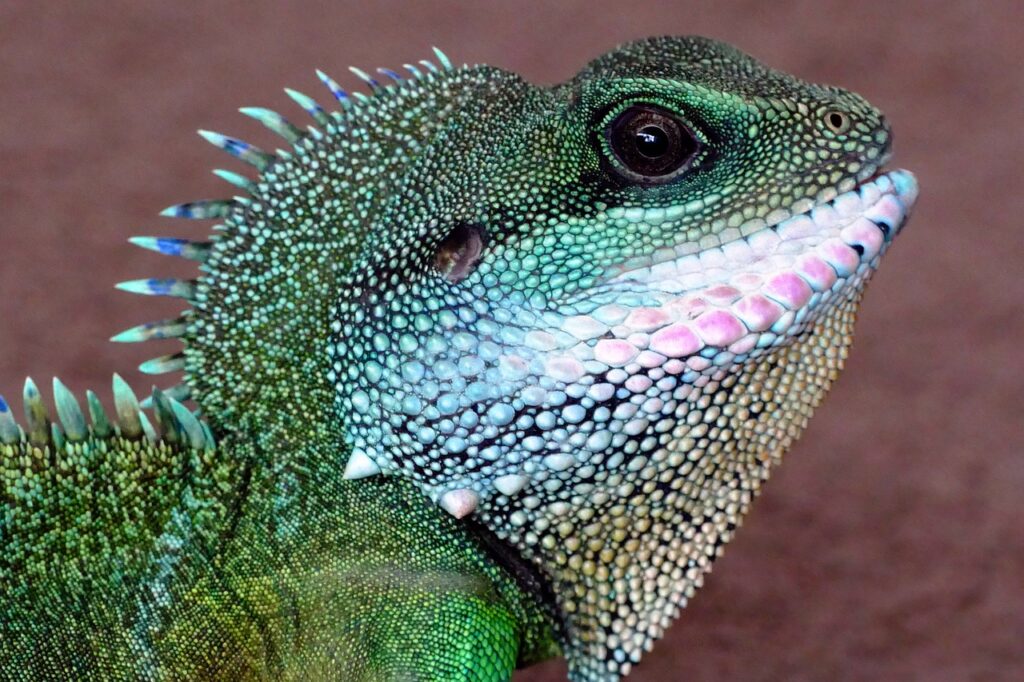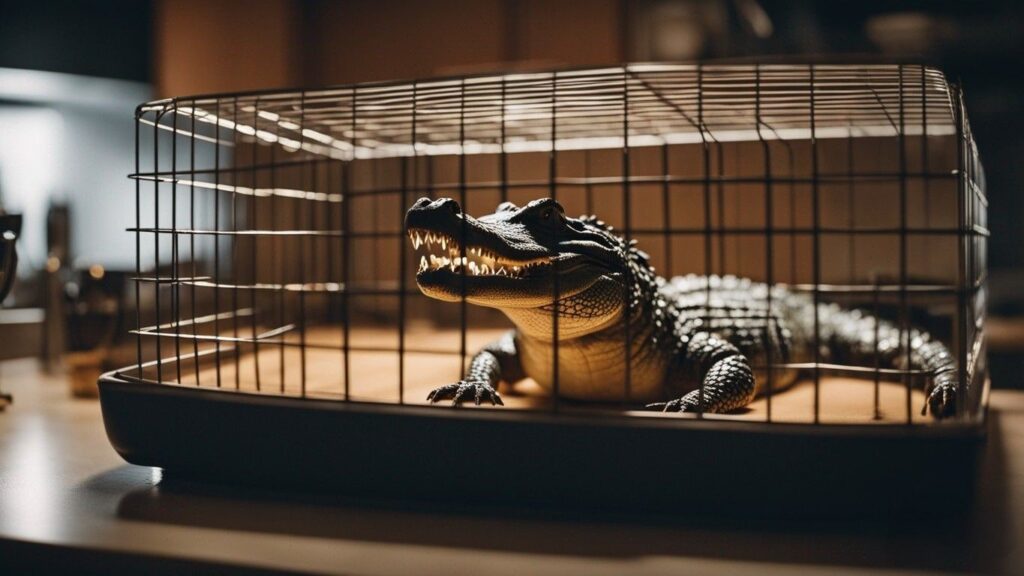You’ve probably seen pictures or videos of armadillo lizards and wondered if they make good pets.
These unique reptiles, native to Africa, have captured the attention of many reptile enthusiasts. Their scaly, armor-like skin and quirky behaviors make them fascinating creatures to observe.
But before you rush out to get one as a pet, it’s important to consider their specific needs and whether or not they are suitable for your lifestyle.
In this article, we will explore the potential joys and challenges of owning an armadillo lizard as a pet.
Physical characteristics of armadillo lizards
Size and weight
Armadillo lizards, also known as armadillo girdled lizards, are small reptiles typically measuring around 5 to 6 inches in length. They are compact and stocky in build, with strong limbs and a well-defined head. In terms of weight, armadillo lizards usually range from 40 to 60 grams, making them relatively lightweight pets.
Appearance
These unique reptiles have striking physical features that make them stand out. Armadillo lizards have a scaly, armor-like skin that provides protection from predators. Their bodies are covered in a series of overlapping scales, giving them a similar appearance to the armadillos they are named after. The coloration of armadillo lizards can vary, with shades of gray, brown, and even reddish hues. Some individuals also exhibit vibrant patterns or markings.
Defense mechanisms
As their name suggests, armadillo lizards possess impressive defense mechanisms to ward off potential threats. When feeling threatened, they have the ability to curl their bodies into a tight ball, with their tail tucked in and their armored scales forming a protective barrier. This adaptive strategy helps deter predators and keeps the vulnerable parts of their body shielded. They may also hiss or display aggressive behaviors to ward off potential threats.
Habitat and care requirements
Native habitat
Armadillo lizards are native to southwestern Africa, specifically found in desert and semi-arid regions of Namibia and South Africa. In the wild, they inhabit rocky areas and arid landscapes with sparse vegetation. These reptiles are adept climbers and burrowers, utilizing the rocky crevices and burrows for shelter and protection.
Terrarium setup
To provide a suitable habitat for your armadillo lizard, a spacious terrarium is necessary. A 20-gallon tank, at the very least, is recommended to accommodate their active nature and climbing tendencies. A terrarium with ample space for climbing structures, hideouts, and basking areas, such as rocks and branches, is essential. Providing various textures and heights will help mimic their natural environment and promote their physical and mental well-being.
Temperature and lighting
Maintaining proper temperature and lighting conditions is crucial to ensuring the health and well-being of armadillo lizards. A temperature gradient should be maintained within the terrarium, with a basking spot reaching around 85 to 90 degrees Fahrenheit (29 to 32 degrees Celsius) and a cooler side ranging between 75 to 80 degrees Fahrenheit (24 to 27 degrees Celsius). The use of a heat lamp or a ceramic heat emitter can help achieve the desired temperature range. UVB lighting is also important for armadillo lizards, as it helps them synthesize vitamin D3 and maintain healthy calcium levels.
Water and humidity
Although armadillo lizards do not have high water requirements, it is important to provide a shallow and sturdy water dish for them to drink from and potentially soak in. Some individuals may occasionally engage in soaking behaviors to maintain proper hydration. In terms of humidity levels, armadillo lizards prefer a drier environment, mimicking the arid conditions of their native habitat. A humidity level of around 30 to 40 percent is generally suitable for these reptiles.
Feeding
Armadillo lizards are primarily insectivores, thriving on a diet of various invertebrates. Their diet should consist of a variety of appropriately sized prey items, such as crickets, mealworms, and small roaches. It is recommended to offer a combination of live and appropriately gut-loaded (fed with nutrient-rich foods) prey items to ensure a balanced diet. In addition to insects, some armadillo lizards may also accept occasional offerings of small fruits or vegetables. However, it is important to note that insects should make up the majority of their diet.
Social needs
Armadillo lizards are primarily solitary creatures, and individuals of the same species are generally not kept together. In fact, housing them together can lead to territorial disputes and stress. It is best to provide each armadillo lizard with its own individual enclosure to ensure their well-being and minimize potential conflicts. However, they can coexist with compatible reptiles in a multi-species setup if proper caution and monitoring are exercised.
Handling and interaction
While armadillo lizards can tolerate some handling, they are not considered highly social or interactive pets. They are generally more comfortable when left undisturbed in their enclosure. When it comes to handling, it is important to keep interactions limited and gentle. Regular and prolonged handling may cause stress and anxiety for these reptiles, so it is best to prioritize observing and appreciating their natural behaviors from a distance.

Behavioral traits of armadillo lizards
Diurnal or nocturnal
Armadillo lizards are primarily diurnal, meaning they are most active during the day. This active period aligns with the availability of sunlight and allows them to bask for warmth and energy. As diurnal creatures, they exhibit a range of behaviors during the day, including foraging, climbing, and engaging in territorial displays.
Activity levels
Armadillo lizards are generally active reptiles, utilizing their environment for climbing and exploring. They are known for their agility and ability to navigate rocky surfaces with ease. Within their terrarium, they require adequate space to engage in these natural behaviors and maintain their activity levels.
Basking and burrowing
Basking is an essential behavior for armadillo lizards, as it helps them regulate their body temperature and absorb necessary UVB radiation. Providing a proper basking spot, such as a flat rock or branch directly under a heat source, is important for their overall health. In addition to basking, armadillo lizards also exhibit burrowing behaviors. They may dig or find crevices within their enclosure to seek refuge or regulate their temperature.
Aggressiveness
While armadillo lizards may display aggressive behaviors towards predators or intruders, they are generally not aggressive towards humans or other pets when kept in captivity. However, individual temperaments may vary, and it is important to approach them with caution and respect their boundaries. Sudden movements or mishandling can potentially trigger defensive behavior, such as hissing or biting.
Intelligence and trainability
Armadillo lizards are not considered highly intelligent or trainable pets. Their behaviors are primarily driven by instinct and their natural tendencies. While they can recognize their immediate surroundings and establish territories, they do not possess the same level of learning capability or trainability as some other reptile species.
Health considerations
Common health issues
Like any pet, armadillo lizards are susceptible to certain health issues. Some common health concerns include respiratory infections, parasitic infections, nutritional deficiencies, and metabolic bone disease. Proper husbandry, including maintaining appropriate temperature and humidity levels, providing a balanced diet, and regular veterinary check-ups, can help mitigate the risk of these health conditions.
Veterinary care
Regular veterinary care is essential in ensuring the well-being of armadillo lizards. It is advisable to consult with a qualified reptile veterinarian to establish a routine wellness check-up schedule and address any health concerns. Routine examinations may include assessing body condition, examining the skin and scales, checking for signs of parasites, and obtaining fecal samples for testing.
Lifespan
Armadillo lizards have the potential to live for up to 10 to 15 years in captivity when provided with proper care and a suitable environment. Factors such as genetics, diet, and overall husbandry practices can influence their lifespan, and it is important to be committed to their long-term care.

Legalities and restrictions
Trade regulations
Before considering owning an armadillo lizard, it is essential to research and understand the legalities and trade regulations surrounding their ownership. Armadillo lizards may be subject to trade restrictions and require permits or licenses in certain regions or countries. It is crucial to adhere to local regulations to ensure compliance and the well-being of these reptiles.
Permits and licensing
Depending on your location, obtaining the necessary permits or licenses may be a requirement for owning an armadillo lizard. These regulations are put in place to ensure responsible pet ownership, the protection of wild populations, and the prevention of illegal wildlife trade. It is important to reach out to local authorities or consult with reptile-specific organizations to understand the specific requirements in your area.
Suitability as a pet
Compatibility with children and other pets
Armadillo lizards are not generally recommended as pets for young children due to their delicate nature and specific care requirements. They require gentle handling and a controlled environment, which may not be conducive to a young child’s tendencies. As for other pets, caution and careful introductions should be observed. Predatory animals or those with a high prey drive may pose a risk to armadillo lizards.
Space and enclosure requirements
Providing adequate space and a properly equipped enclosure is crucial for the well-being of armadillo lizards. Their active nature and climbing tendencies require a spacious enclosure with plenty of vertical space and structures. Additionally, areas for basking, hiding, and burrowing should be provided to meet their natural needs.
Time commitment
While armadillo lizards do not require as much time and attention as some other pets, they still demand regular care and monitoring. Daily tasks such as feeding, spot-cleaning, and monitoring temperature and humidity levels are necessary. Additionally, regular veterinary check-ups and maintenance of the enclosure, including cleaning and providing fresh water, are part of the commitment when owning an armadillo lizard.
Expense considerations
The cost of owning an armadillo lizard includes various factors such as the initial setup of the terrarium, ongoing costs for proper nutrition and veterinary care, and potential expenses for maintaining appropriate temperature and lighting conditions. Additionally, there may be costs associated with obtaining necessary permits or licenses, depending on your location.
Grooming needs
Armadillo lizards do not require extensive grooming as they naturally shed their skin periodically. However, providing a clean and hygienic enclosure, regular spot cleaning, and monitoring their overall health and appearance are important aspects of responsible pet ownership.
Potential challenges of owning an armadillo lizard
Prone to stress
Armadillo lizards are known to be sensitive to stress, especially when kept in environments that do not mimic their natural habitat or when subjected to improper handling. Stress can have negative effects on their overall health and well-being, so it is important to establish a suitable terrarium setup and minimize disturbances to reduce their stress levels.
Specialized care
The care requirements of armadillo lizards are relatively specialized, necessitating attention to temperature, lighting, humidity, and diet. It is essential to research and familiarize yourself with these specific care needs before considering owning an armadillo lizard. Lack of proper care can lead to health issues and reduce their quality of life.
Availability and acquisition
Armadillo lizards may not be readily available in all areas and can be relatively rare as pets. Finding a reputable breeder or a source with a focus on responsible breeding and ethical practices is important to ensure the health and well-being of the individual armadillo lizard you choose. Proper research and patience may be required to acquire an armadillo lizard as a pet.
Ethical and conservation concerns
Wildlife capture and trade implications
The capture and trade of armadillo lizards can have significant implications for their wild populations. Irresponsible collection practices, habitat destruction, and illegal wildlife trade can all pose threats to their survival. It is crucial to only obtain armadillo lizards from reputable sources, such as breeders who prioritize ethical practices and conservation efforts.
Conservation status
The conservation status of armadillo lizards varies among different species and subspecies. Some populations may be more vulnerable or endangered due to habitat loss and human activity. It is important to be aware of the conservation status of the specific species you are considering as a pet and support conservation efforts that aim to protect these reptiles in their natural habitats.
Responsible pet ownership
Responsible pet ownership plays a crucial role in the well-being and conservation of armadillo lizards. This includes proper research and preparation before obtaining a pet, providing suitable care and a proper environment, and supporting ethical breeding practices. It also involves educating others about the unique needs and importance of conservation for armadillo lizards.
Alternatives to armadillo lizards as pets
Similar reptiles
If armadillo lizards are not readily available or suitable for your circumstances, there are other reptiles that share similar characteristics and may make suitable pets. Some alternatives to consider include bearded dragons, leopard geckos, and crested geckos. These reptiles have different care requirements but can offer similar enjoyment to reptile enthusiasts.
Other small pets
If the specific traits and care needs of armadillo lizards do not align with your preferences or lifestyle, there are many other small pets to consider. For those seeking a low-maintenance option, small mammals like hamsters, gerbils, or guinea pigs may be more suitable. Birds, fish, or even invertebrates like tarantulas can also offer unique companionship experiences.
Final Thoughts
Armadillo lizards are fascinating and unique reptiles, but they require specialized care and attention to thrive as pets.
Proper research, preparation, and commitment to their specific needs are crucial before considering bringing an armadillo lizard into your home.
Understanding their physical characteristics, habitat requirements, behavioral traits, and potential challenges will help you make an informed decision about whether an armadillo lizard is the right pet for you.
Responsible ownership, ethical considerations, and conservation efforts are integral to ensuring the well-being of armadillo lizards and their continued presence in the natural world.




